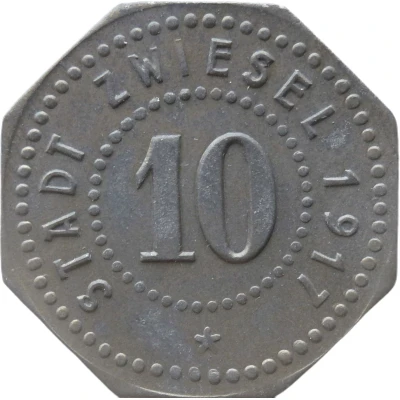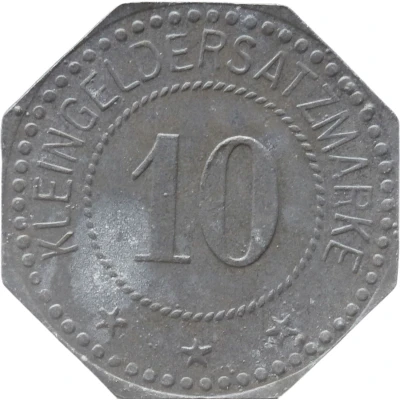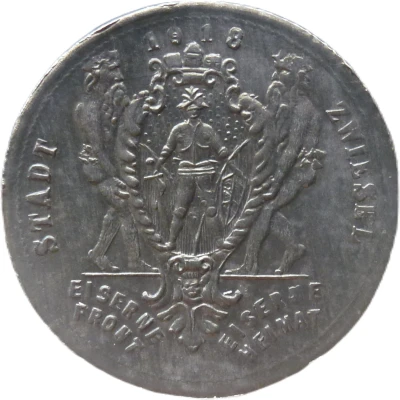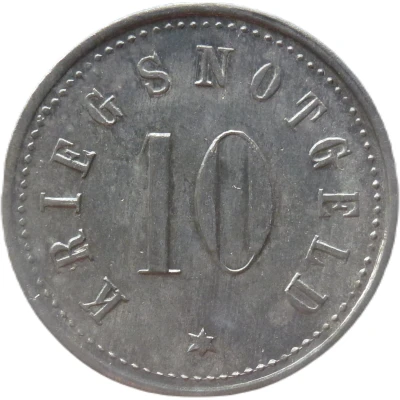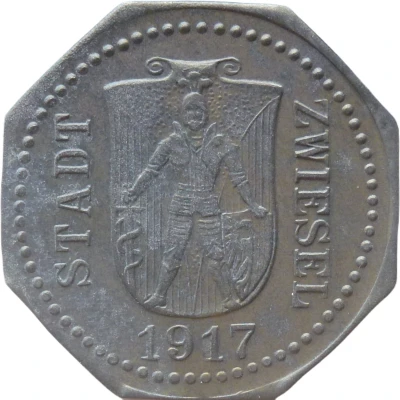
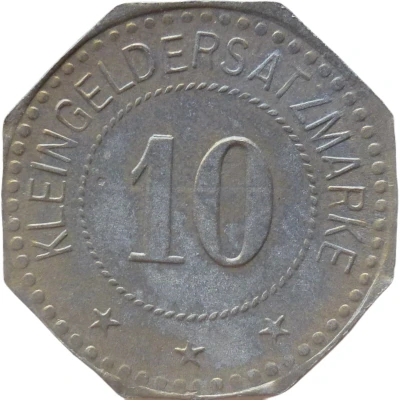

© Willem63 (CC BY-NC-SA)
10 Pfennigs - Zwiesel
1917 year| Zinc | 1.8 g | 20.8 mm |
| Issuer | City of Zwiesel (Federal state of Bavaria) |
|---|---|
| Emperor | William II (Wilhelm II) (1888-1918) |
| Type | Standard circulation coin |
| Year | 1917 |
| Value | 10 Pfennigs (10 Pfennige) (0.10) |
| Currency | Mark (1914-1924) |
| Composition | Zinc |
| Weight | 1.8 g |
| Diameter | 20.8 mm |
| Thickness | 1.1 mm |
| Shape | Octagonal (8-sided) |
| Technique | Milled |
| Orientation | Medal alignment ↑↑ |
| Demonetized | Yes |
| Updated | 2024-10-04 |
| Numista | N#64693 |
|---|---|
| Rarity index | 79% |
Reverse
Pearl rim, legend surrounding rope circle with denomination centered
Script: Latin
Lettering:
KLEINGELDERSATZMARKE
10
★ ★ ★
Edge
Plain
Comment
Issuing body: [Stadt, Bayern].Interesting fact
The 10 Pfennigs - Zwiesel 1917 coin was minted during a time of economic turmoil in Germany, known as the "Inflationary Period" (1914-1923). During this time, the value of the German mark (the national currency) dropped significantly, leading to a period of hyperinflation. As a result, many Germans turned to alternative forms of currency, such as local emergency currencies like the 10 Pfennigs - Zwiesel 1917 coin. This coin, made of zinc and weighing 1.8 grams, was issued by the City of Zwiesel in Bavaria and was used as a form of local currency during this time. Despite its face value of 10 pfennigs, the coin's actual value was much higher due to the scarcity of other forms of currency. Today, the 10 Pfennigs - Zwiesel 1917 coin is a rare and valuable collector's item, serving as a reminder of a unique period in German history.
